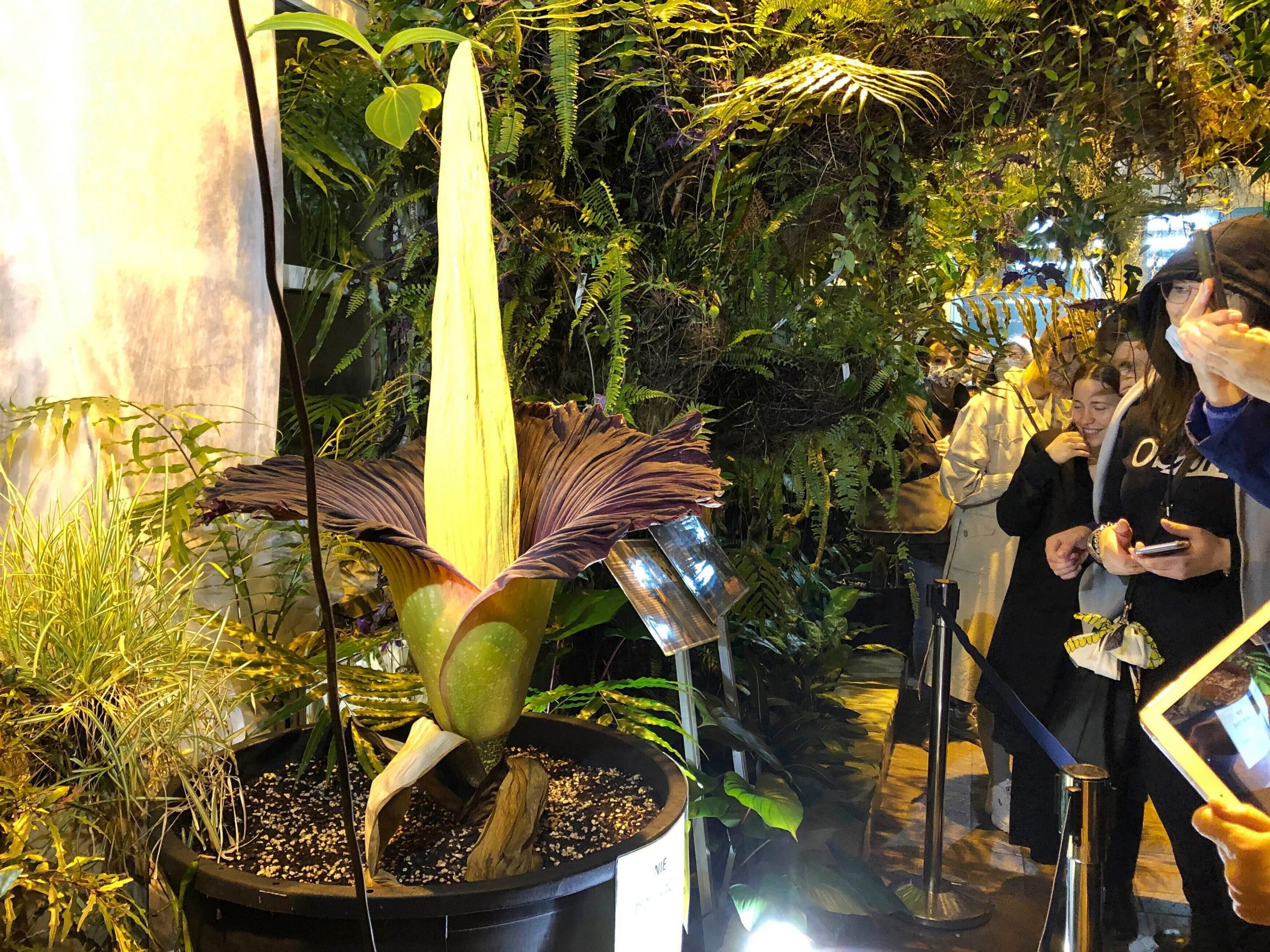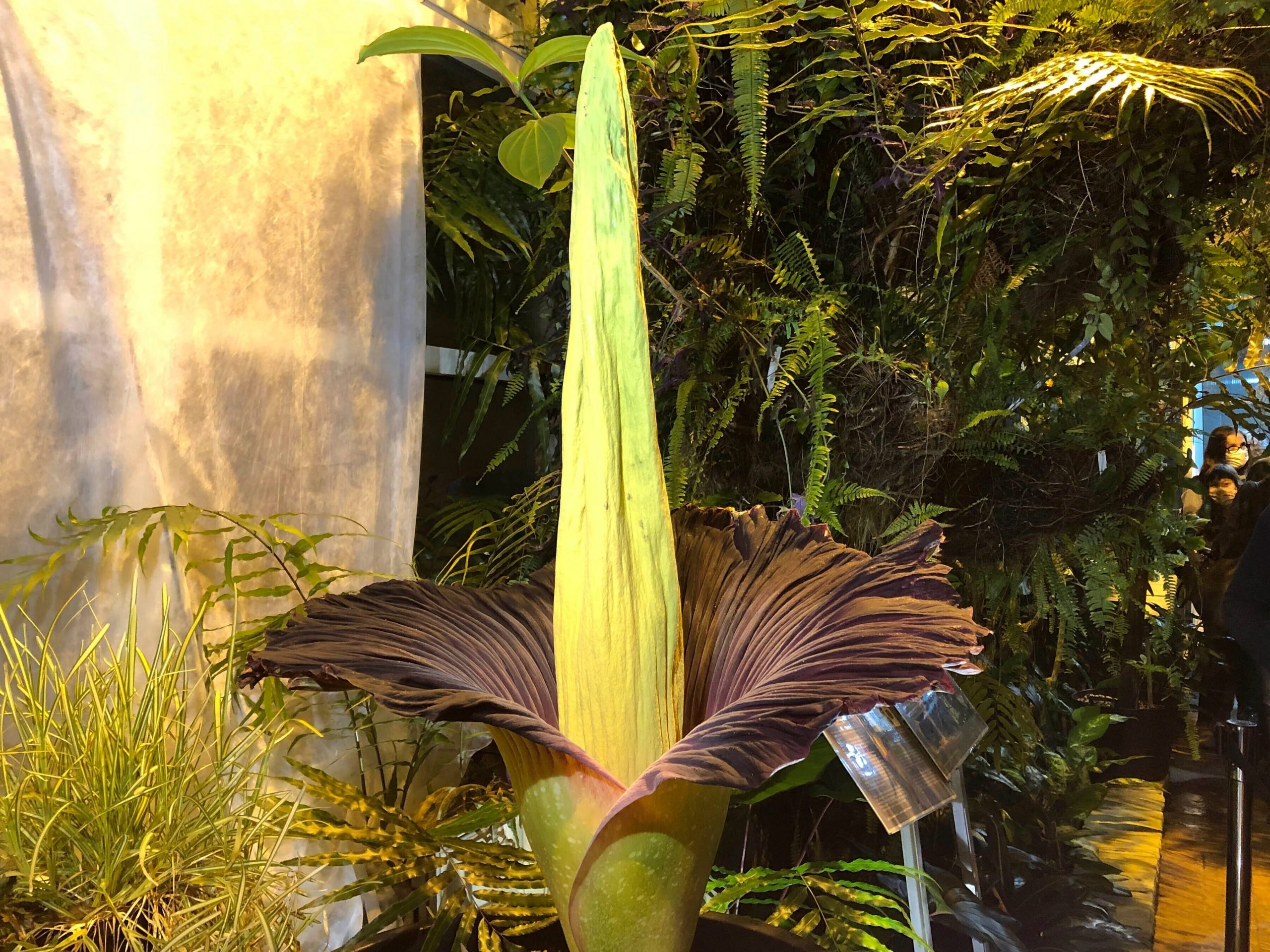
AP Photo/Monika Scislowska
- An endangered flower that smells like rotten meat bloomed in Warsaw on June 13.
- People waited in line for hours to see the corpse flower bloom at a botanical garden.
- The plant smells like the rotten flesh pollinating insects feed on, attracting them to the plant.
- Visit Insider's homepage for more stories.
The endangered Sumatran Titan arum, a giant foul-smelling blossom also known as the corpse flower, went into a rare, short bloom at a botanical garden in Warsaw, drawing crowds who waited for hours to see it.
The extraordinary flower, which emits a dead-body odor to attract pollinating insects that feed on flesh, bloomed Sunday. It was already withering early Monday. Those wishing to avoid the smell and crowds could watch it on live video from the Warsaw University Botanical Gardens.
Hundreds, if not thousands, lined up long into the night Sunday and Monday morning at the conservatory just to be able to pass by the flower and take a picture.

Monika Scislowska/AP
Know also as the Amorphophallus titanum, the flowering plant has the largest unbranched inflorescence in the world, which can be up to 10 feet (3 meters) high. Its compound flower is composed of a hollow, tall spadix with small flowers and a spathe, with one big, furrowed petal that is green on the outside and deep burgundy red on the inside. Its blooming is rare and unpredictable.
Back in 2016, a corpse flower bloomed at the New York Botanical Gardens, as Insider previously reported. The bloom and stench last between 24 to 36 hours, according to the same article.
In 2018, the same type of flower bloomed inside of the Spheres on Amazon's Seattle campus, Insider previously reported.
The plant only grows in the wild in the rainforests of Sumatra, but it is endangered there due to deforestation. Cultivation at botanical gardens, where they are a great visitor attraction, has helped its preservation. Its first known blooming outside Sumatra was in 1889 at London's Royal Botanical Gardens at Kew.
